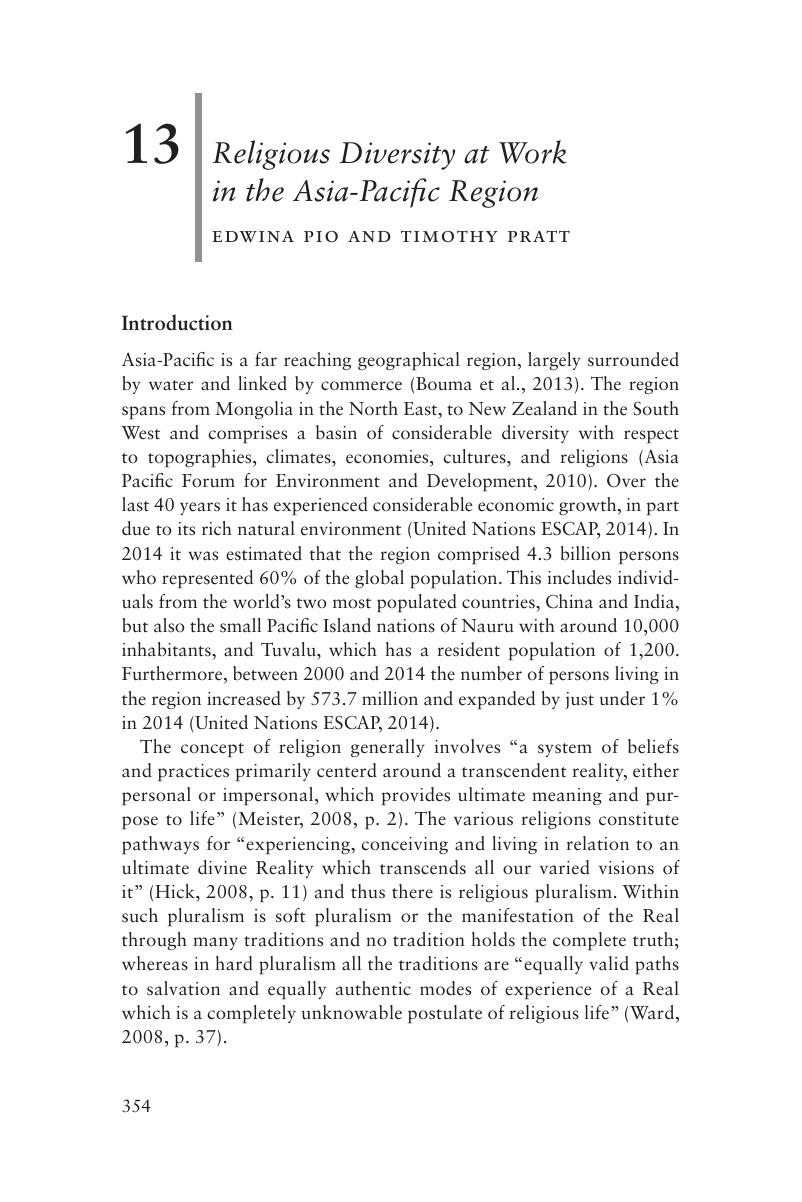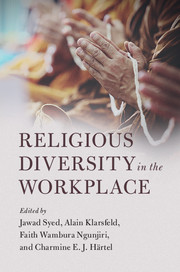Book contents
- Religious Diversity in the Workplace
- Religious Diversity in the Workplace
- Copyright page
- Contents
- Figures
- Tables
- Boxes
- Contributors
- Introduction: The Complex Interface of Work and Religion
- Part I General Frameworks and Sources of Reflection
- Part II Religious Approaches
- Part III Regional Approaches
- 9 Spirituality and Workplace Diversity Practices in Africa
- 10 The French Principle of Laïcité1 and Religious Pluralism in the Workplace: Main Findings and Issues
- 11 Lessons from the Academy: Concordia College's Journey toward Religious Pluralism
- 12 Religious Diversity in the Canadian Workplace: The Case of Muslims
- 13 Religious Diversity at Work in the Asia-Pacific Region
- Part IV Organizational Approaches
- Index
- References
13 - Religious Diversity at Work in the Asia-Pacific Region
from Part III - Regional Approaches
Published online by Cambridge University Press: 15 December 2017
- Religious Diversity in the Workplace
- Religious Diversity in the Workplace
- Copyright page
- Contents
- Figures
- Tables
- Boxes
- Contributors
- Introduction: The Complex Interface of Work and Religion
- Part I General Frameworks and Sources of Reflection
- Part II Religious Approaches
- Part III Regional Approaches
- 9 Spirituality and Workplace Diversity Practices in Africa
- 10 The French Principle of Laïcité1 and Religious Pluralism in the Workplace: Main Findings and Issues
- 11 Lessons from the Academy: Concordia College's Journey toward Religious Pluralism
- 12 Religious Diversity in the Canadian Workplace: The Case of Muslims
- 13 Religious Diversity at Work in the Asia-Pacific Region
- Part IV Organizational Approaches
- Index
- References
Summary

- Type
- Chapter
- Information
- Religious Diversity in the Workplace , pp. 354 - 386Publisher: Cambridge University PressPrint publication year: 2017
References
- 1
- Cited by



